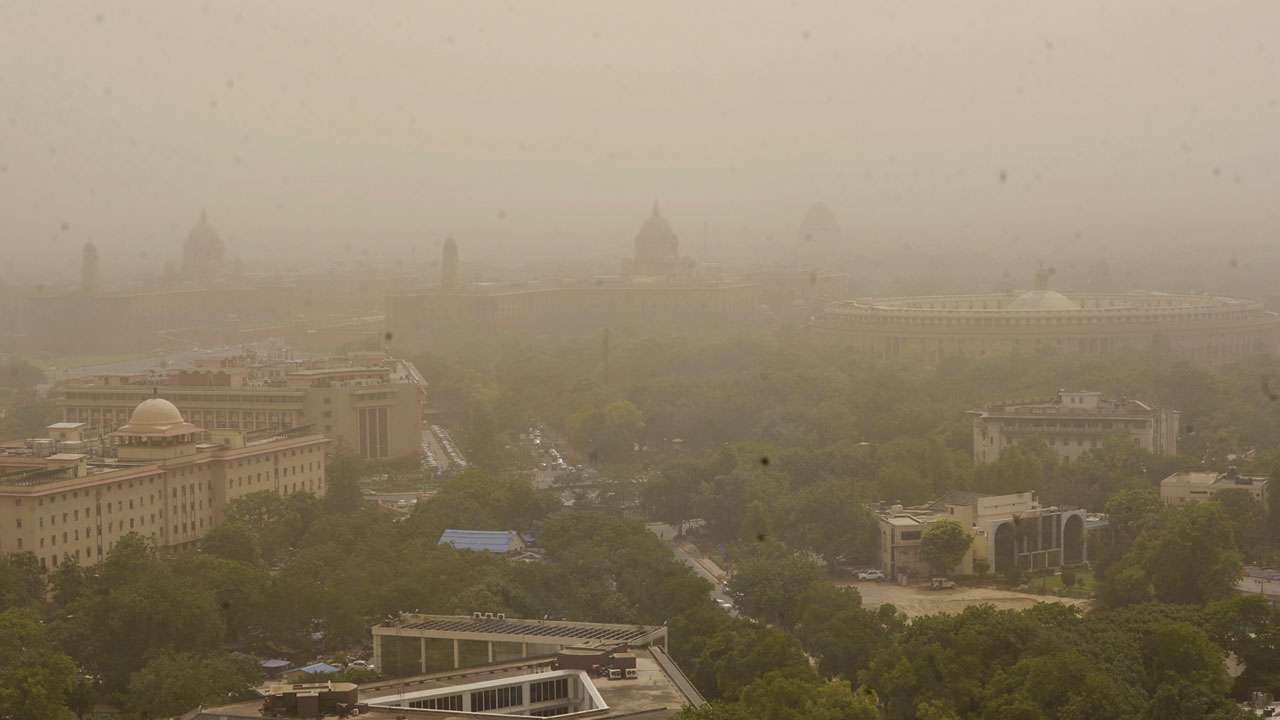
Northern India’s air pollution problem will soon potentially experience its annual peak with the upcoming Diwali festivities. This would have worried 2018 Nobel Laureate in economics WD Nordhaus, since it seems emerging economies like India have not paid enough attention to his research on a dynamic integrated climate economy model about which he wrote back in 1993.
In fact, Nordhaus and his co-authors in 2011 also proposed how to account for environmental pollution in the national accounts, demonstrating how air pollution emission caused more damage than benefits to the economy. But in India, have we done enough to understand the quantum and sources of air pollution, how they spread and what is the damage they cause?
While one cannot be sure, let’s first dwell on the quantum of the problem. India is home to 15 of the 20 most polluted cities in the world. New Delhi, with a population of over 20 million, is the most polluted capital city in the world.
Satellite data indicates that the entire Indo-Gangetic belt has some of the worst air (in PM2.5 terms) to breathe. At the same time, scientific evidence examining the sources is sparse. All we have to rely on is some emerging satellite based data (from researchers like Sagnik Dutta at IITD) and some scanty network of on ground high quality air quality (AQ) monitors; clearly the gap is glaring. A recent study by Sarath Guttikunda and colleagues argues that India needs 4,000 continuous AQ monitors against the 134 or so deployed so far.
This is a travesty since globally, air pollution kills some 6.5 million people and is now the fourth largest threat to human health. In China, it has been shown that air pollution not just induces cardiovascular conditions, but may also affect mental health, sway investor activity and even influence migration decisions of households.
The phenomena may even spill over to industry formation. Search air pollution at Amazon during these festive times, and notice a large swathe of air pollution masks being sold from various firms and air purifiers being advertised, dime a dozen. Relatedly, a quick search on www.zauba.com, an export/import data providing website, indicates that between February 2013 and November 2016, imports to India of air purifier related products was in excess of $28 million. China seems to be the major supplier in the space with $17 million of (more than 50 per cent) total products imported.
Air purification products, however, are just a consumer response to demand for clean air. Whenever there are externalities of this sort, economists want to understand the cost from these externalities and how much is the average citizen willing to pay to mitigate these. This helps policymakers penalise polluters or to incentivise the market towards lower pollution.
It seems this is now high in China, as research from Koichiro Ito and Shuang Zhang have found. While the average person in China is willing to pay $5.46 to remove one microgram per cubic metre of pollution from the air s/he breathes for five years, higher income persons can pay as much as $15.
While Chinese entrepreneurs have leveraged on this opportunity, India’s domestic entrepreneurs seem to have lagged behind even if air purification is an imperfect and reactive solution. IIT Madras’ smart air purifier Vistar is now in the market at supposedly half the prevailing market rates, but it is unclear if it will be able to beat competition.
Meanwhile, other studies are now showing that maybe the answer to the problem lies not just in public policy, for example in policing metropolitan car usage (in Milan, Italy, there seems to be a significant reduction in air pollution with road pricing and reduced usage of cars as Matthew Gibson and Maria Carnovale have shown), but also in finding structural solutions to the same.
In a recent 2018 paper, Harvard scientist Daniel Cusworth and co-authors show that since at least the 1980s, a shift in North West India to mechanised combine harvesting in agriculture to improve efficiency results in abundant crop residue in the fields, such that burning those residues can attribute somewhere between 7 and 78 per cent to Delhi’s air emission enhancements from PM2.5 levels during the period of 2012 to 2016.
Sensing this apriori in 2016, the University of Chicago’s Energy Policy Institute in their Delhi office launched an innovation challenge and one solution nominated involved greener and more sustainable ways to burn crops and deal with the soil in North West India.
The central government too seems to have honed down on tamping the seasonal burning of crop residue as the approach to follow. But it remains to be seen if the mechanism of carrot and sticks, as designed by the government, finds adopters in Punjab.
Even so, in the absence of directed measures to reduce traffic congestion, reducing exposure to construction dust, rampant garbage burning, and towards building pollution awareness, the overall exposure to pollution will not reduce by much.
Delhi and northern India, meanwhile, continue to reel. Data with the authors from the All India Organisation of Chemists and Druggists, that tracks pan-India private medicine sales, indicate that Delhi alone was consuming a non-trivial 41 per cent of anti-asthmatic medicines being sold among the three metropolitan cities (Mumbai and Kolkata included) between 2007 and 2013.
During this period, average monthly sales of such medicines was about Rs 159 million in Delhi and this number spiked in December and January to over Rs 200 million on an average.
Maybe the consumer of air pollution, citizens of India and the market now needs to find answers to tax or price out air pollution. Nordhaus would have nodded in agreement. In addition, he would have also advocated for complementary government support.
Chirantan Chatterjee is a faculty member in business policy and economics at IIM Ahmedabad and Anirban Gongopadhyay is the CEO of Jorro Networks, a Gurgaon- based firm, which engages in areas of market or institutional failure, including air pollution.